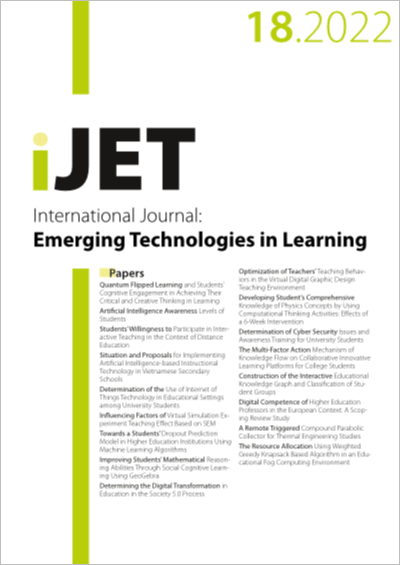Construction of the Interactive Educational Knowledge Graph and Classification of Student Groups
DOI:
https://doi.org/10.3991/ijet.v17i18.34183Keywords:
interactive educational knowledge graph, online learning, knowledge point interaction, group classificationAbstract
The attributes of the knowledge nodes in the interactive educational knowledge graph need to cater to students’ online learning preferences, so understanding the composition and learning preferences of students in the online learning process is helpful to the development of more targeted learning paths. Currently, there are few existing research results on knowledge graph embedding methods based on students’ interaction with respect to knowledge points, student group composition and their learning preferences. To this end, this paper studies the construction of an interactive educational knowledge graph and the classification of student groups. First, a knowledge recommendation idea was proposed based on the classification of student groups. Through the three types of interaction behaviors - human-computer, teacher-student, and student-student interactions that occur on the online learning platform, the depth of students’ interactions with respect to the knowledge points in the interactive educational knowledge graph was characterized. The online learning effects of students were quantified by the interactive achievement of knowledge points mastered by students and the weights of knowledge points which represent their importance. Then, the effects of the differences in the interactions of students with respect to different knowledge points on the stability of the similarity prediction of students’ learning preferences were explored, and based on the analysis results, students were classified into groups. The experimental results verified the effectiveness of the proposed model.
Downloads
Published
How to Cite
Issue
Section
License
Copyright (c) 2022 Nan Zhang (Submitter); Hai Sun

This work is licensed under a Creative Commons Attribution 4.0 International License.


